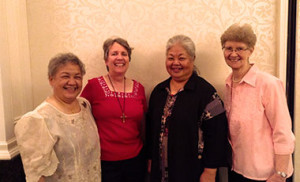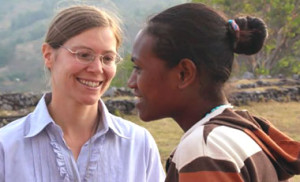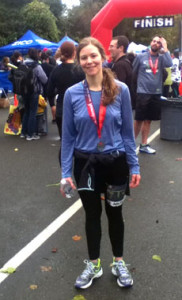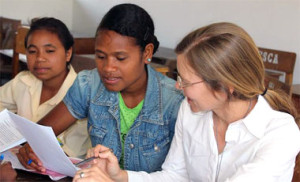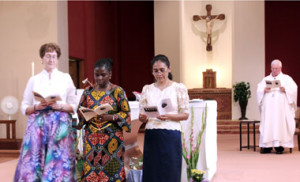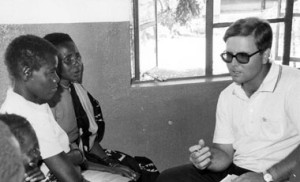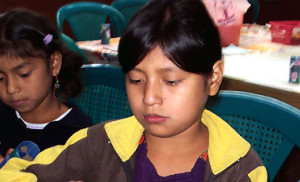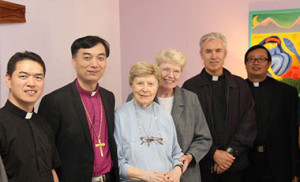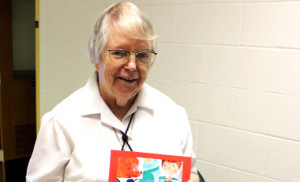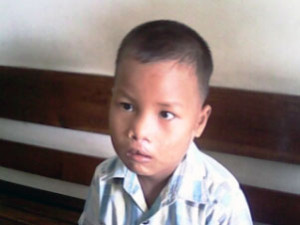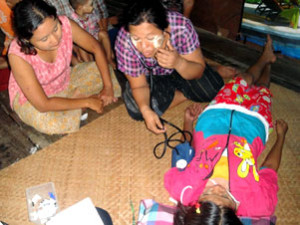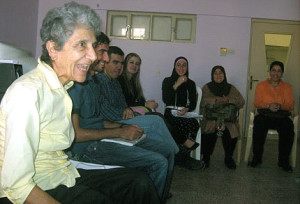From Maryknoll Magazine: I believe religious life has a prophetic voice for the world and that we need to proclaim this from the heart of who we are,” says Sister Antoinette (Nonie) Gutzler, the newly elected president of the Maryknoll Sisters.
She and a three-member team of Sisters will for the next six years lead their Congregation to continue to proclaim God’s love to the world. This, says Sister Gutzler, means discerning where the greatest needs are and how God is calling the Sisters to respond. The new leadership team brings to this task vast experience in mission overseas and in the United States.
Born in Brooklyn, N.Y., Sister Gutzler entered the Congregation in 1964. She took education courses at the Maryknoll Sisters Rogers College and earned a bachelor’s degree in theology from Mundelein College in Chicago in 1971.
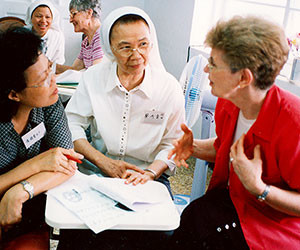
In 1975 she returned to the States to do mission education in the New England area. In 1978 she was assigned to Taiwan. For the next 10 years she was director of the Sodality of Young Workers Center, founded by the Maryknoll Sisters for factory workers to find support and learn leadership skills.
Called back to Maryknoll, N.Y., in 1989, Sister Gutzler became director of the Sisters personnel office, which, she says, gave her the opportunity to meet many Sisters she didn’t know. She earned an M.A. and Ph.D., both in systematic theology, from Fordham University
and returned to Taiwan in 2001. Since then, she has been teaching in the theologate at Fu Jen University and giving lectures in theology throughout Asia.
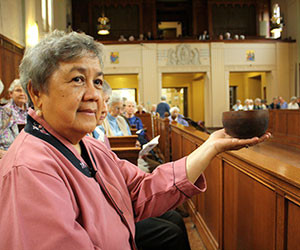
As for her Congregation, she says, “I hope we continue to grow in our contemplative awareness of what is happening in our world, with an ever deepening passion for Christ’s mission by being witnesses of God’s loving presence in all of creation and in all people.”
Sister Numeriana (Norie) Mojado, vice president, was born in the Philippines. After graduating as a nurse from the Marian School of Nursing in Manila, she worked in emergency rooms for 13 years in the Philippines, the United States and Canada. “However,” she says, “I needed something more. That’s when I saw Maryknoll magazine and applied to join the Sisters.”
She studied theology at the Maryknoll School of Theology and became certified in clinical pastoral education. In 1976, she received her first mission assignment: South Korea, to work in a psychiatric clinic in Seoul.
Sister Mojado was part of an integrated community of Maryknoll priests, lay missioners and Korean religious and laity, offering pastoral counseling and spiritual direction among the urban poor. Maryknoll Father Russell Feldmeier was also on the team.
Back in the States, Sister Mojado earned a master’s degree in religious education, with concentrations in pastoral counseling and spiritual direction, at Fordham University. She then returned to Seoul and ministered to women involved in prostitution and migrant workers.
She has served her Congregation as admissions co-director and personnel director. In 2013 she was assigned to the Maryknoll Sisters contemplative community.
Regarding her new work on the Sisters leadership team, she says, “I believe it was all those experiences I’ve had that prepared me to accept this new ministry.”
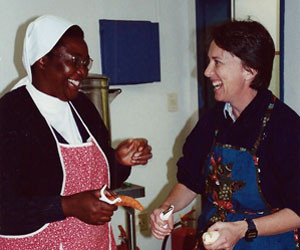
She spent two years with the Jesuit Volunteers Corps and then joined the Maryknoll Lay Missioners. Assigned to Venezuela, she did community organizing and pastoral ministry in urban areas.
In 1986 she joined the Maryknoll Sisters and was assigned to Bura-Tana, a rural area in northeastern Kenya, for eight years. Then she worked in the capital of Nairobi as a community consultant with Jesuit Relief Services. She later moved to Namibia and did pastoral and leadership training for the Rundu Vicariate. During her last year in Namibia, Sister Lott served as human resource development officer for Catholic Health Services and volunteered with Criminals Return Into Society, teaching business management and computer skills to former inmates.
In 2003, she was called back to Maryknoll, N.Y., to be director of Planned Giving and later, the Development Department. “I’ve had a wonderful opportunity to serve my community,” she says, “and to work with and know our donors, who are really the bedrock of our work.”
Now, she says, “I plan to do the best I can on the leadership team to work together to serve the mission of God.”
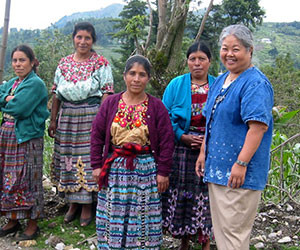
Returning to New York, she worked in the Congregation’s Development Department while earning a master’s degree in religious studies at Maryknoll School of Theology. In 1978 she was assigned to Japan, where for almost 10 years she assisted a Maryknoll priest in establishing and expanding the Alcoholics Anonymous program. “I was there not as a therapist, but as a friend for whoever wished to have a conversation with me to deepen their understanding about a Higher Power,” Sister Ito says. By the time she left, there were 10 AA centers throughout Japan.
In 1989 Sister Ito was assigned as co-director of the Sisters’ orientation house for new members. She remained there for five years and after studying pastoral counseling at Fordham University, she went to Guatemala to work with indigenous Mayan women, assisting them with potable water projects, medical aid and building self-esteem. “Now they are in charge of various projects and have become proud of who they are,” says Sister Ito.
As a member of the Sisters’ leadership team, she says, “I hope to be able to share my experiences, where I witnessed miracles happening in the lives of others because they surrendered themselves to a Higher Power.”

